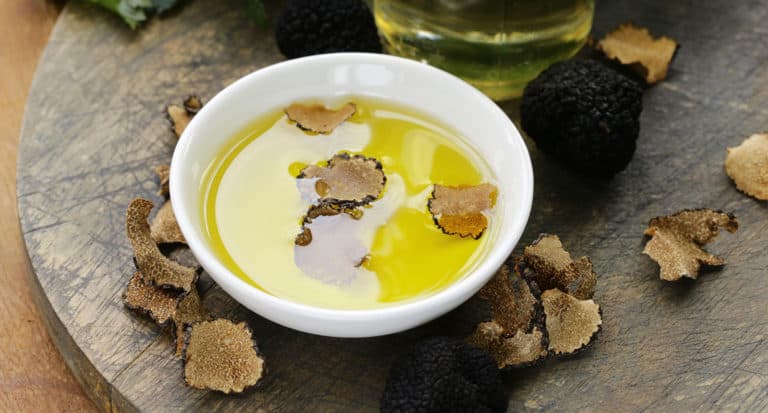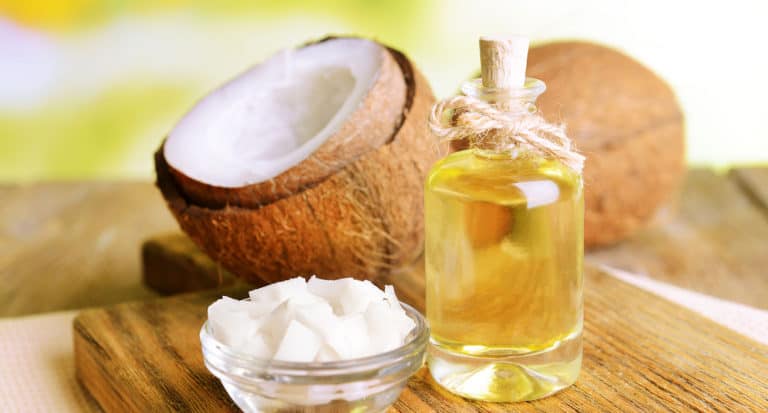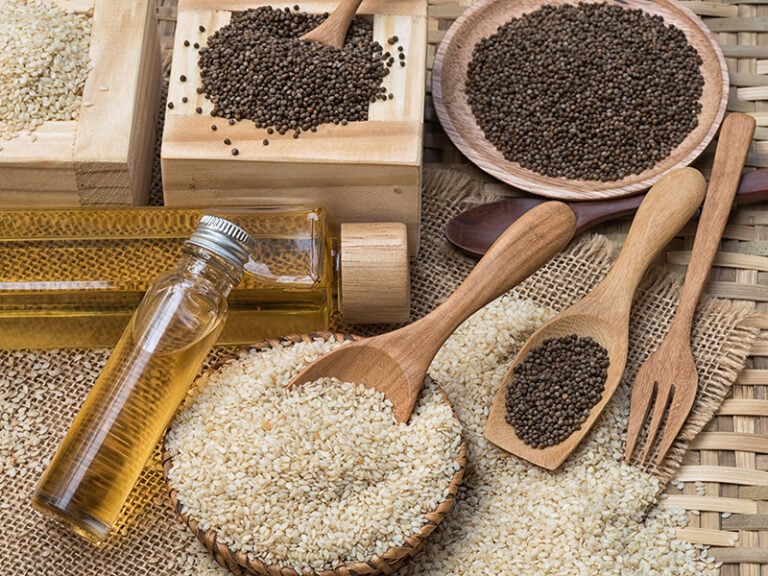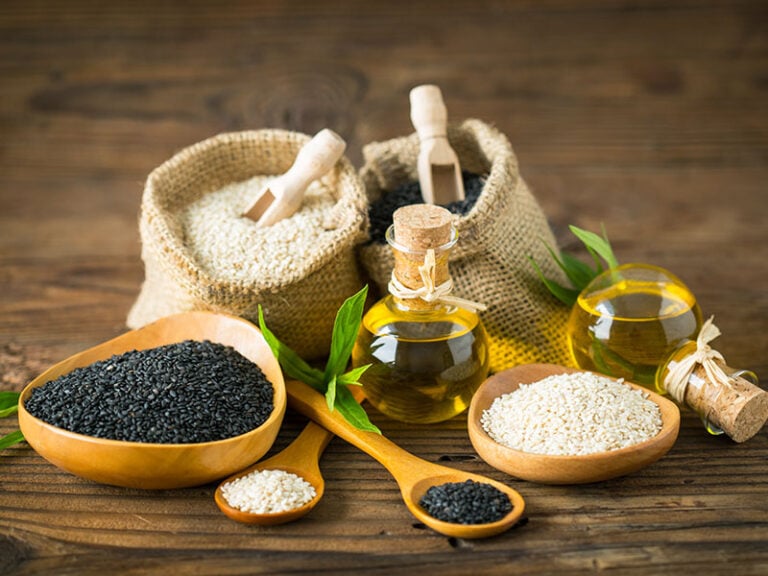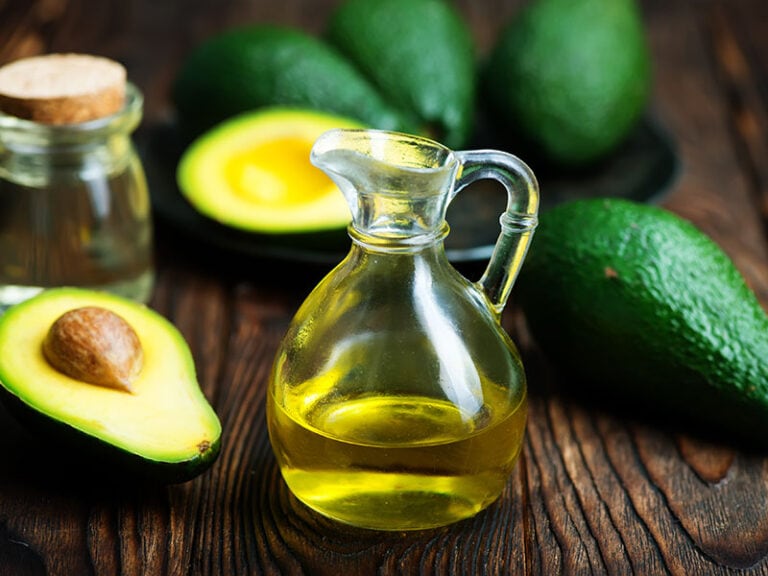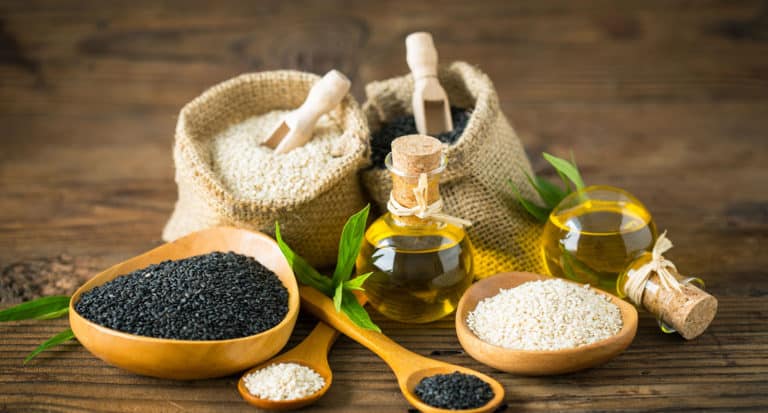Kalamata olives vs. black olives; If you are looking for the result of this battle, you must be a big fan of olives. A delicious bowl of spring olive salad with virgin olive oil or savory spaghetti with garlic, olives, and chili flakes might be great for your healthy day.
However, you may sometimes get confused when naming these olives since there are various types worldwide. Here are some useful tips for becoming a real olive expert!
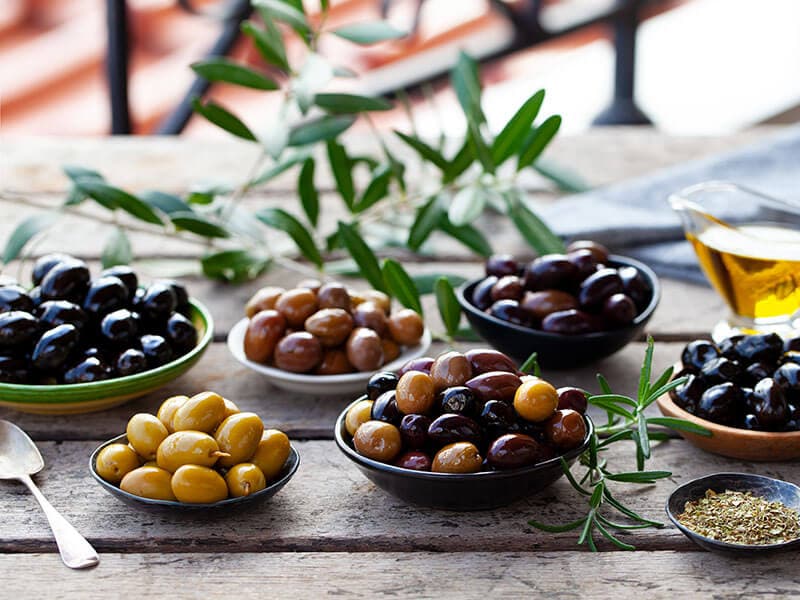
General Information About Olives
You probably use olives in your daily life but may not have in-depth knowledge. It turns out that olives are technically fruits, not vegetables, as many people think. Olives are also listed in the stone fruit category, including cherries, apricots, peaches, plums, and so on.
Olives have become an indispensable ingredient in worldwide cuisine. They are small fruits, but the benefits they give to us are big. Among hundreds of varieties of olives, Kalamata olives and black olives are two of the most popular.
Kalamata Olives – A Natural Greek Gift
Kalamata olives are edible olives grown in arid conditions and dry soil. This variety of olives is named after Kalamata, located in southern Peloponnese, Greece.
Thanks to its unique taste, fleshy texture, and many significant benefits, Kalamata olives have become special gifts from Mother Nature to the Mediterranean region.
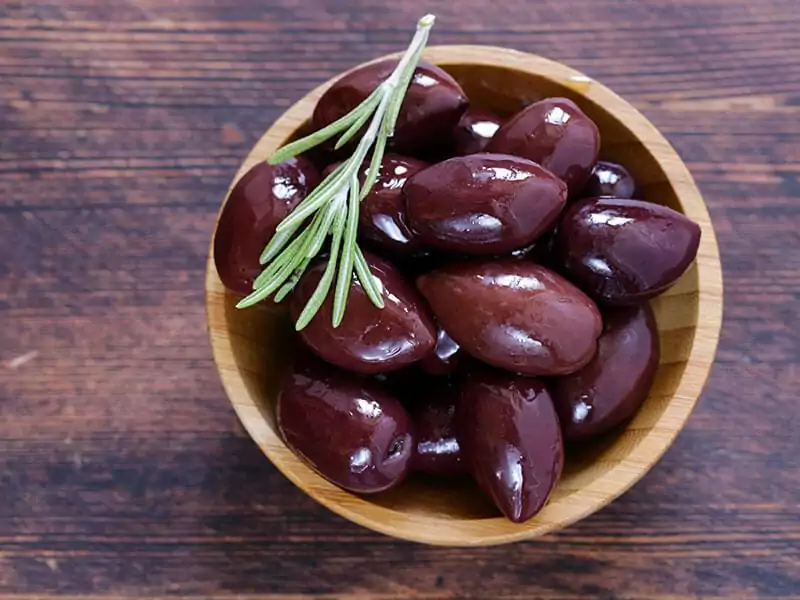
Black Olives – Super Nutritious Fruits
Black olives are tropical fruits mainly grown in Mexico, Central America, northern South America, and the Caribbean. Unlike Kalamata olives, black olives love moisture and rich soil.
Black olives are popular with olive fans worldwide as they appear in many different delicious dishes. There are plenty of black olives, as Kalamata olive or Greek black olive, is one of these varieties.
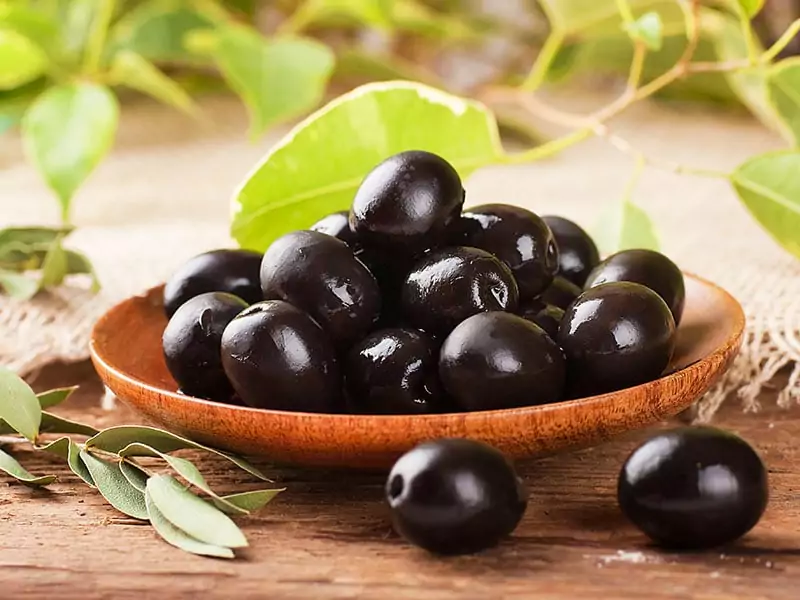
Similarities Between Kalamata Olives & Black Olives
Before exploring the dissimilarities between these two olives, there are a few similarities between them that you should notice.
Both Of Kalamata Olives & Black Olives Have To Be Cured
All fresh olives have an extremely bitter taste and must go through a “cure” stage to be edible. There are multiple curing methods, such as water curing, brining, lye curing, etc., depending on the type of olive and the intended use.
You may find it helpful with the detailed olive cure instructions at the bottom of the article.
Multiple Uses In Flavorful Recipes
Although these two olives differ in texture and taste, people still use them as savory ingredients similarly. They can be toppings in dishes such as pizza, salad, or pasta, enhancing the flavor with their unique and potent taste.
Because Kalamata olives have a stronger flavor, you should only use them in particular dishes, avoiding overpowering the main ingredients.
Tapenade
Tapenade is the most typical dish with olives as an ingredient. You can use Kalamata olives and black olives with bread or sandwiches. Use Kalamata olives if you want an intense dish; black olives offer a more complex taste.
Pasta
Regarding pasta, I often think of pesto pasta right away, as it usually has black olives. Kalamata olives are also suitable for this Italian dish. But the true pasta dish for Kalamata is pasta tosses.
Salads
I’m delighted to inform you that both black olives and Kalamata olives go very well with salads, especially adding a cup of feta cheese. Choose black olives if you just crave a mild brunch. Or, if you’re making a Greek salad, take some Kalamata olives for a stronger flavor.
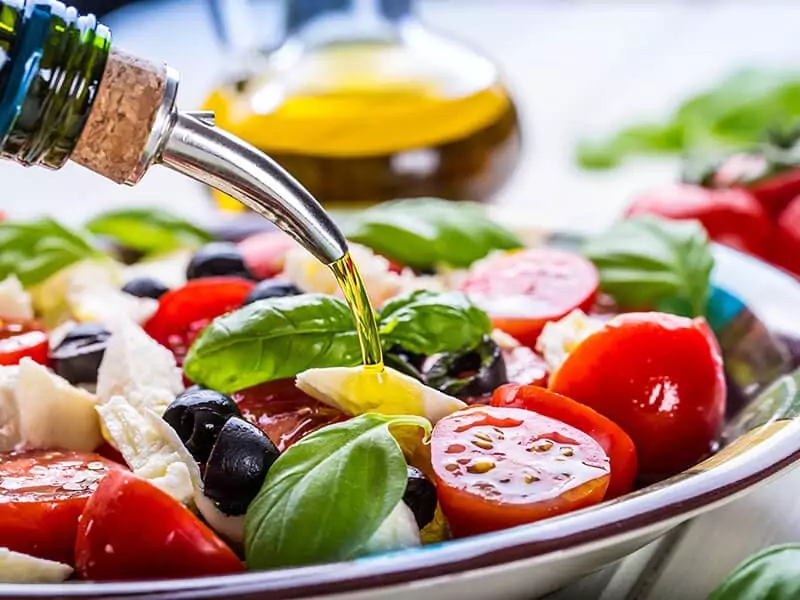
Bruschetta (Italian appetizer with grilled bread and toppings)
Any kind of olive can appear in bruschetta, black, or Kalamata. However, you need to consider other ingredients before choosing the olives, as Kalamata can overbalance your bruschetta.
Sandwiches/Wraps
Black olives are a familiar ingredient in many sandwiches. But if you want something unique, Kalamata ones are a nice choice.
Crackers
You’ve seen various sweet crackers; how about savory crackers with cheese and olives? They can be a perfect element for your snacking party or cheese board. Just pair them with any plain foods, and you’ll have a whole different experience.
Olive Oil
The diverse olive varieties result in a wide range of olive oils with different textures and flavors.
While the other olives are more suitable for olive oil production, factories also extract black and Kalamata olives to produce oil. Furthermore, Kalamata olive oil has been recognized as one of the finest oils in the world for meeting PDO’s premium quality standards.
Kalamata olive oil gives a savory and spicy taste, whereas black olives oil taste is a bit mild. That explains why they often go with green olives, which have a richer flavor, while the black ones are responsible for increasing the creaminess of the oil.

The Gaps Between Kalamata Olives And Black Olives
Kalamata olives are actually a part of the black olive family. However, they are unlikely to be the same. The table below can help you easily distinguish these two types of olives.
Origin
Kalamata olives were originally grown in Messinia, a Greek region. They were named after the city near Messinia called “Kalamata”. Specifically, they only adapt to dried, low-moisture conditions and can be found throughout the Mediterranean, the United States, and Australia.
Unlike Kalamata olives, black olives are in many areas, such as Mexico, northern South America, Central America, and the Caribbean. Black olives also come from the Mediterranean area. Most varieties of black olives love humid subtropical climates.
Additionally, people pick black olives as they are semi-mature with green color and then processed with lye and oxygen to be fully matured. They are “California olives” – you may often see them at stores.
Appearance
The easiest way to distinguish these two types of olives is through their appearance. Kalamata olive has a thin and long shape with a little bit of rough skin. They are usually dark brown or dark purple in large to extra-large sizes.
When they are ripe, they will turn from green to stunning reddish brown purple, and their pit will become much pointier, similar to the almond shape.
Meanwhile, black olives are normally small and medium. They have a round shape and shiny and glowy green skin. The curing process will help to ripen them as the color will turn darker, which comes in 2 common colors: dark black and deep chocolate brown.
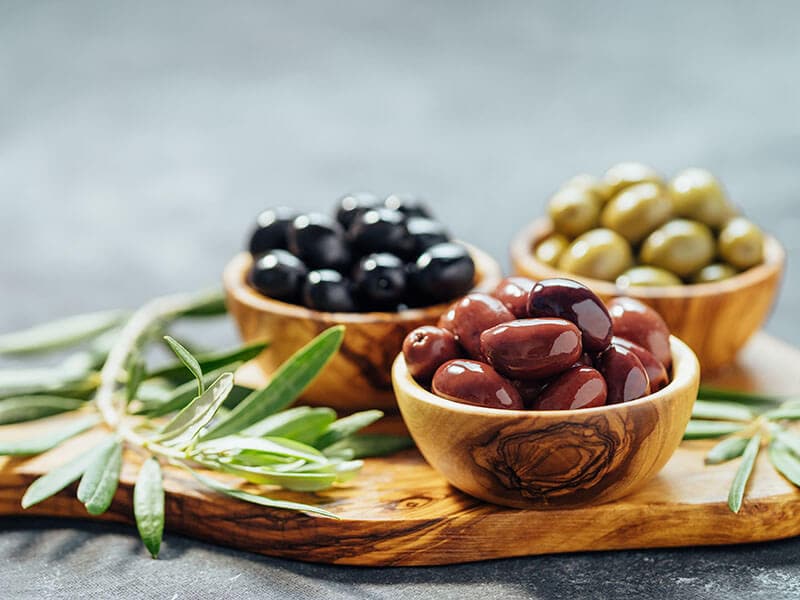
Taste
Raw black olives and Kalamata olives are both very bitter. However, after being cured with diverse methods and ingredients, they immediately define their own flavors.
Kalamata olives have a unique taste regardless of their brine. They provide a strong, sharp, potent smell in your mouth with a little sour flavor and light sweetness. Some people also describe them as fruity and sexy.
Meanwhile, the taste of black olives is often mild, salty, sweet, or tangy, depending on their types and storage methods. For instance, the Lugano black olives are saltier, and the Italian Gaeta olives are softer. Black olives brined with herbs will have a special herbal taste.
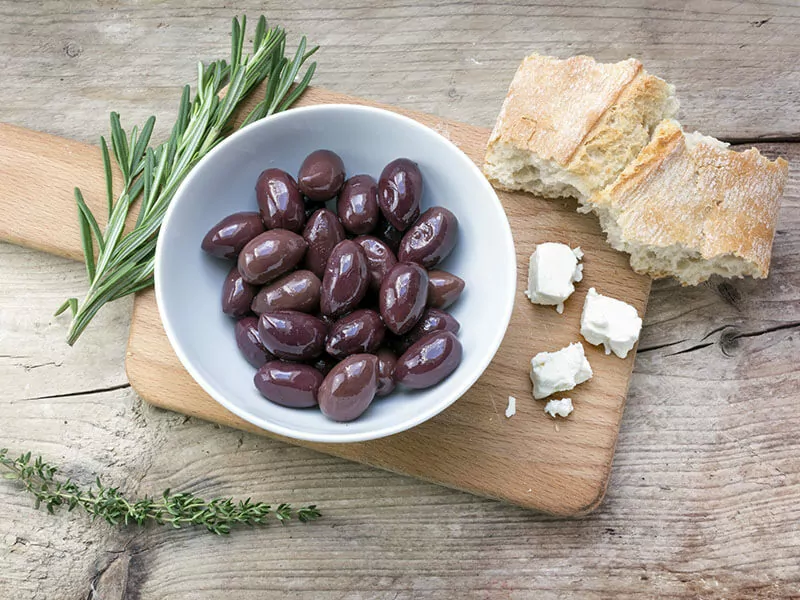
Texture
Due to their large size, Kalamata olives have mushy flesh and a meaty and smooth texture. Of all the olives, Kalamata is almost the softest one. It only takes 1 pop for them to be pitted, and they often fall to pieces in your mouth.
In contrast, black olives tend to be harder, similar to green olives’ texture. Plus, they also have tougher and chewier flesh. Their shiny skin is smooth and requires more effort to eat, so they are usually cut into slices.
Harvest
The olive harvest season is from August to the end of November, depending on the region, weather, and desired ripeness. The younger olives, the more bitter they are, and vice versa.
When the Kalamata olives are fully mature, they will be hand-picked only to avoid damaging fruits, which can directly affect the final products. In contrast, black olives are usually picked when green and unripe.
Keep an eye on the time because you don’t want to ruin the flavor of the olives. They must be processed within 3 days, or they will oxidize and become sour.
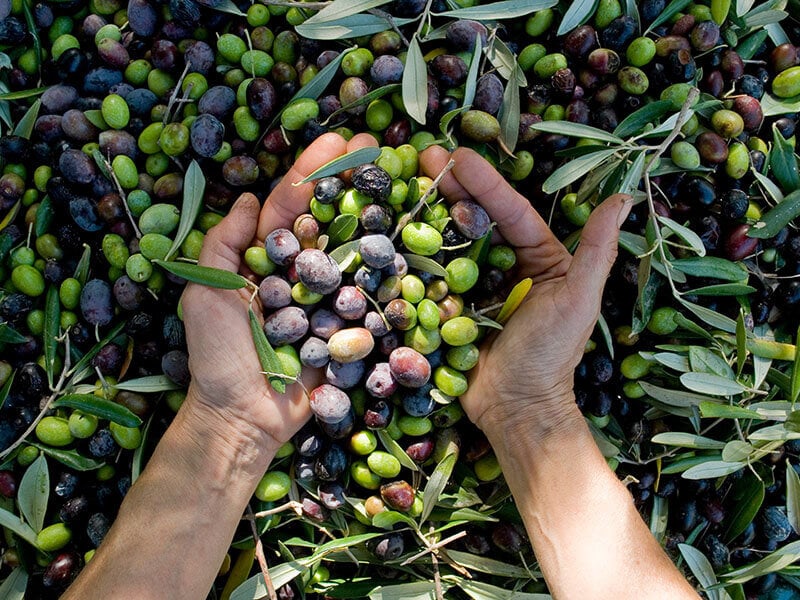
Curing Process
Depending on the type of olive, people will select an appropriate cure method. Usually, Kalamata olives, after being harvested, will go through a 7-day process with salt water (commonly called brine) before being edible.
Meanwhile, black olives will use lye treatment to remove bitterness and ripen the fruits from green to black.
Price
Kalamata olives are far more expensive than black olives because they are hand-harvested and officially approved by The Protected Designation of Origin (PDO) of the European Union’s System of Approval for their quality and excellence (3).
The price of Kalamata olives at the grocery stores is 2 or 3 times higher than black olives, depending on the product types: pickled or fresh.
Nutrition
Kalamata olives are higher in calories, healthy fat, protein, sodium, and vitamin than black olives. In light of being harvested by hand and not using lye, their nutritional values may be slightly more favorable.
Black olives are still good for you, as they have lower carbs and a better supply of minerals. Of course, all olives are highly beneficial to your health. They reduce the risk of obesity and heart attack and keep the body full of energy for the whole day.
To make the comparison easier, the following table provides the nutritional information of Kalamata olives and black olives:
Can You Substitute Kalamata Olives For Black Olives?
Yes, black olives can substitute for Kalamata olives in most dishes. However, remember that black olives won’t be as deep and rich; they taste milder and slightly bitter.
Since there are different kinds of black olives, Gaeta would be a suitable alternative as the taste is quite similar but slightly lighter. If you want to highlight the main ingredient, California black olives will be the best choice to replace.
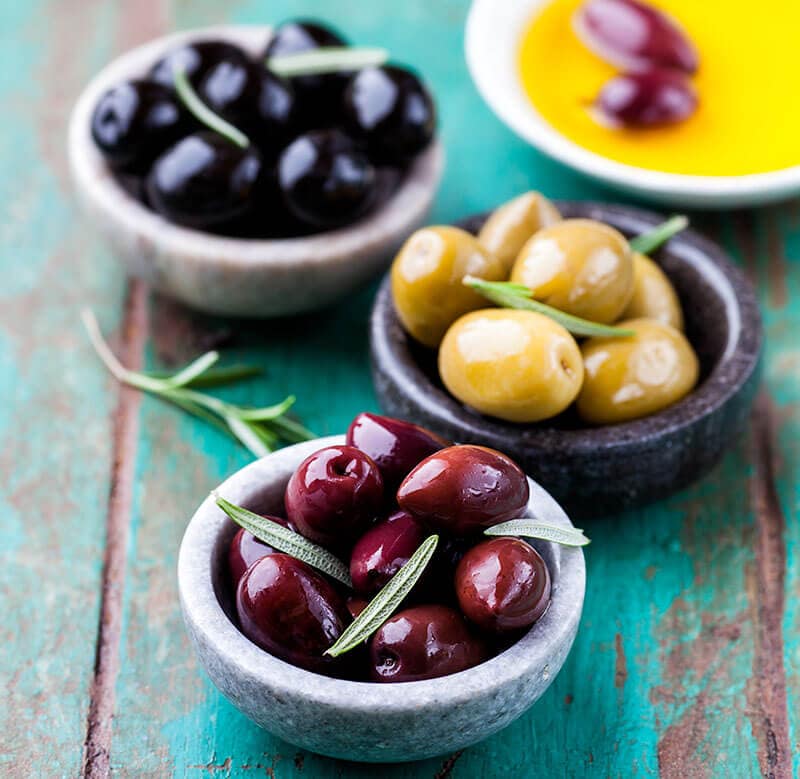
3 Flavorful Recipes With Kalamata Olives
The distinctive taste of this olive gives you confusion in choosing a recipe. Let me share several dishes where Kalamata olives are the highlights.
Roasted Salmon Nicoise Salad
A bowl of salmon salad can replenish your energy for a long day without loading up a lot of starch. With vegetables, boiled eggs, salmon filets, and Kalamata olives covered in vinaigrette and pesto, this dish is suitable for your workout days.
Even with cold-poached salmon, this salmon Nicoise salad is an easy and healthy side dish for your family.
Mediterranean Quinoa Bowls With Roasted Red Pepper Sauce
If you’re a big fan of Kalamata olives, you definitely cannot skip this mouth-watering quinoa bowl. With different vegetables, it will provide your body with many nutrients. And the red pepper sauce is a nice highlight with its heat.
Marinated Roasted Chicken Topped With Kalamata Olives
Don’t have enough time to cook? This recipe only uses one pan, and its flavor won’t disappoint you. Combining roasted chicken, wine mushroom sauce, and pitted Kalamata olives will satisfy your hungry stomach.
You’ll Love These Black Olive Recipes
I bet these yummy recipes with black olives will give you and your family good appetites. And they don’t take too much time to make. So, let’s try them now!
Pepperoni And Black Olive Pizza
Making your own pizza at home has never been so simple! And I guarantee it’ll taste like restaurant-bought ones. The combination of pizza sauce, pepperoni, provolone cheese, and nutritious black olives will make you a heavenly-tasting dinner.
Do you feel hungry? A delicious, easy-to-make black olive pizza will solve the problem.
Pasta Puttanesca (Italian Pasta With Tomato Sauce And Black Olives)
A plate of authentic Italian pasta with a touch of olives would be an ideal dish when you are short of ingredients. I bet this yummy spaghetti will give you and your family good appetites! You can even choose between Neapolitan and Roman versions.
Black Olive Potato Gratin
Add this potato gratin with black olives to your daily menu now! Although it doesn’t have any meat, this recipe still satisfies your hungry stomach with potatoes and bechamel sauce (made of butter, flour, and milk). With melted cheese on top, no one can refuse it.
Interesting Facts About Olives
As olives have existed on earth since ancient times, they contain many hidden secrets. Hold your breath, or you will be taken aback.
- Normally, it takes 5-6 years for an olive tree to produce fruits and several more years for full production.
- Since olives are rich in vitamins E, B, K, and especially antioxidants, you can use olive oil for your skincare routine, including removing makeup, exfoliating, treating acne, moisturizing, and even fading scars.
- Besides skin benefits, olive oil is also a wise choice for your hair incubation. It is better to apply oil to dry hair and scalp thoroughly, leave for 15-20 mins, then rinse your hair with cold water.
- Always check the information about how olives were brined when buying olives. Only accept when the manufacturer uses natural ingredients to brine, such as sea salt, lemon, vinegar, and extra virgin olive oil.
- To eliminate olives’ acidity and salinity, you should initially put warm water in the olives jar and then store it in the fridge for at least a night. Change the water inside sometimes so you can use these olives for up to a year.
- You can not eat olives off the trees. Raw olives are bitter because of a bitter phenolic compound called “Oleuropein”. That’s why ancient people just harvested olives to extract oil and used this oil for lamps, medicine, cosmetics, perfume, soap, etc.
- Olives are great with cheese, pasta, sauce, salad, or pizza. They are also great snacks that you can eat at any time of the day.
- Black olives are usually combined with green olives to produce olive oil.
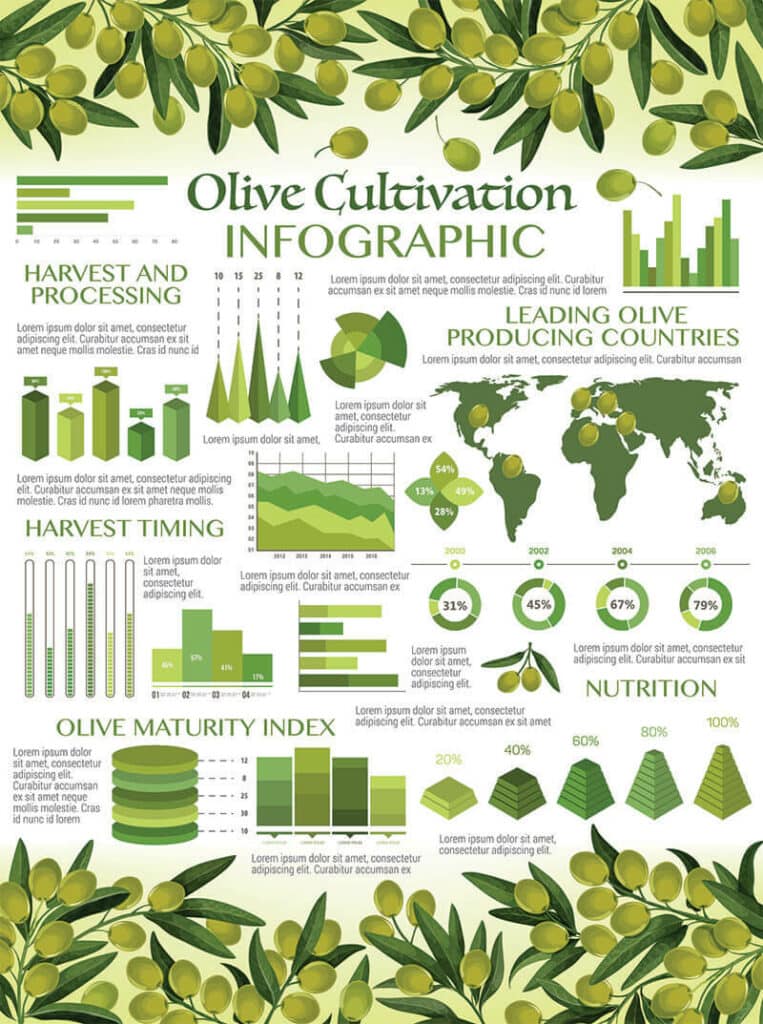
How To Cure Olives (Step By Step)
Craving a bowl of tapenade, but you only have just-harvested olives? Don’t you worry, follow the steps below to cure fresh olives like a pro.
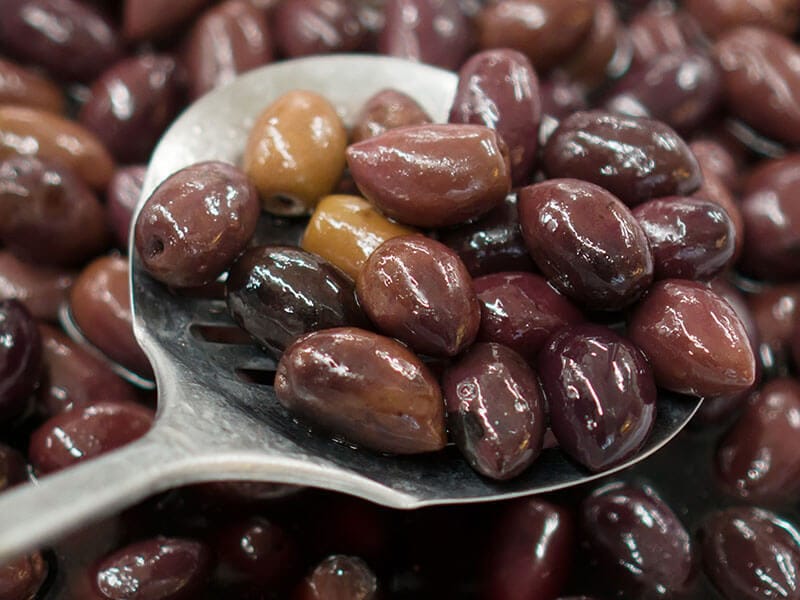
How To Cure Kalamata Olives
With a few easy-to-find ingredients and supplies, it’s never been so easy to get rid of the olive bitterness. And now, let’s start by going to the kitchen to gather these:
- 5 pounds of fresh Kalamata olives
- 1 large container
- Sea salt
- Red wine vinegar
- Olive oil
Curing your favorite Kalamata olives has never been so easy. Roll up your sleeves right now!
- Rinse olives in clean water and slice each with 2 cuts about 1/7 inch lengthwise.
- Put the olives into a large container and pour in cool water. A useful tip is placing a heavy dish on top of the olives to immerse them.
- Change the water after 24 hours for 7 to 10 days (continue the process up to 18 days if you don’t like the remaining bitter taste).
- Prepare the brine for 5 pounds of fresh olives: combine olives with 5-¾ cups of salt with ½ gallon of water, give that a quick stir, then add 2 cups of red wine vinegar.
- Replace the water with the brine and finish with about ¾ cup of extra virgin olive oil.
- Store at a temperature from 68°F to 77°F for at least a month.
How To Cure Black Olives
Black olives have a different texture, so the fermentation time is also distinct. Follow these 4 simple steps to eliminate the bitterness from fresh black olives. You will need:
- 7-10 pounds of fresh black olives
- 1 glass jar with an airtight lid
- Sea salt
Here are the steps to get your black olives cured. Read my instructions carefully, and you will make it on the first try.
- Clean the olives, remove defective ones and pack them into a glass jar with an airtight lid.
- Pour in the first brine mixture (⅘ cup of salt per gallon of water) and keep at about 68°F to 77°F.
- After a week, drain the jar and replace it with a second brine mixture (5-¾ cups of salt with 1 gallon of water). Set aside the olives for at least 2 months.
- If you still want to lower the bitter level, replace it with the third batch of brine and wait for 1 more month before using these olives.
You can find an easy way to make the perfect brine for your black olives here.
The Right Way To Store Your Olives
No matter how many varieties of olives there are, they all just need the same way to store. If you don’t want to see your olives go bad fast, you should place olives in an airtight jar or container with a firm cover and store them in the fridge.
Sunlight is the greatest enemy of your lovely olives, so get your olive jar away from it. Olives can last up to a year if you seal them tightly and ensure they are always fully submerged.
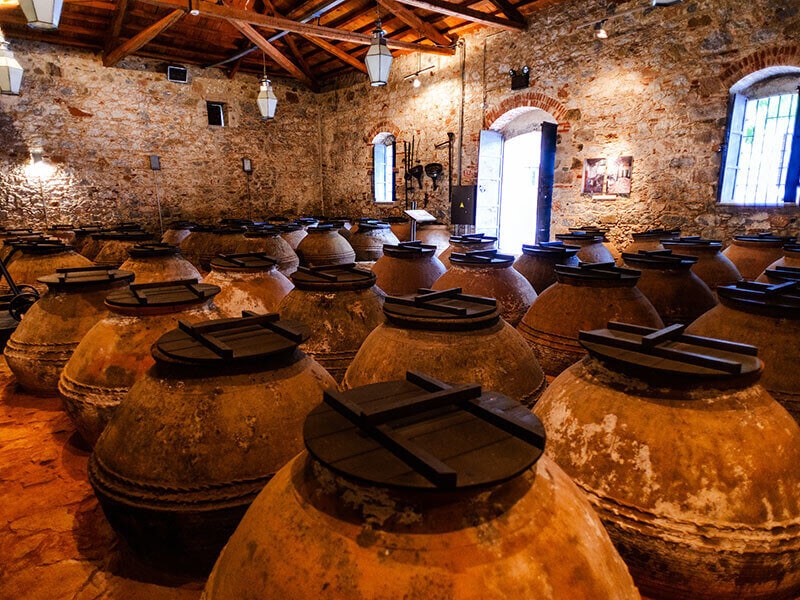
FAQs
After reading my handy tips, you must have mastered how to identify Kalamata olives and black olives. But wait a minute, let’s look at some questions most people ask.
Kalamata Olives Vs. Black Olives – It’s Now Easier To Distinguish
Distinguishing these two olives is not as difficult as you think because each type of olive often has distinct features that you need to pay a little attention to figure out.
Kalamata olives or black olives are both nutritious for your health. So why don’t you go to the store and buy yourself a jar of olives if you haven’t got one at home?
Finally, if you feel these tips are useful, don’t hesitate to share this information with your family and friends so they can learn more about Kalamata olives and black olives. And remember to comment your problems, thoughts, or suggestions about this article!
References
- fdc.nal.usda.gov. 2022. Historical Record: Kalamata Olives. [Online]. Available at: <https://fdc.nal.usda.gov/fdc-app.html#/food-details/381241/nutrients>
- fdc.nal.usda.gov. 2022. Historical Record: Pitted Black Olives. [Online]. Available at: <https://fdc.nal.usda.gov/fdc-app.html#/food-details/395417/nutrients>
- olive oil market.eu. 2022. European PDO & PGI. [Online]. Available at: <https://www.oliveoilmarket.eu/origins/europian-pdos/>
- frontiersin.org. 2019. Olive Nutritional Status and Tolerance to Biotic and Abiotic Stresses. [Online]. Available at: <https://www.frontiersin.org/articles/10.3389/fpls.2019.01151/full>

